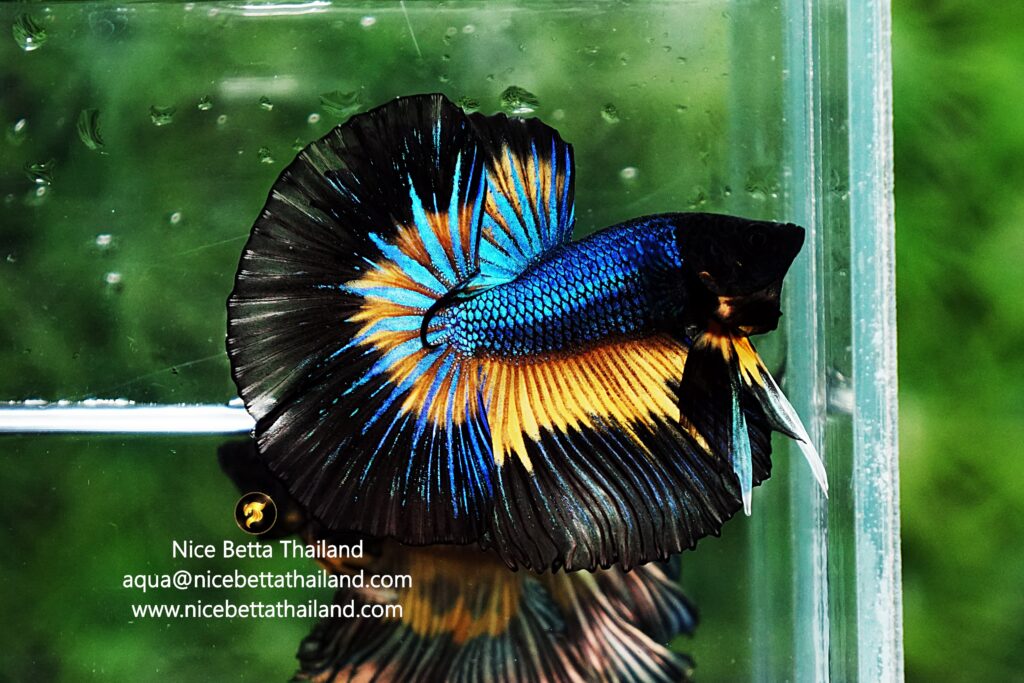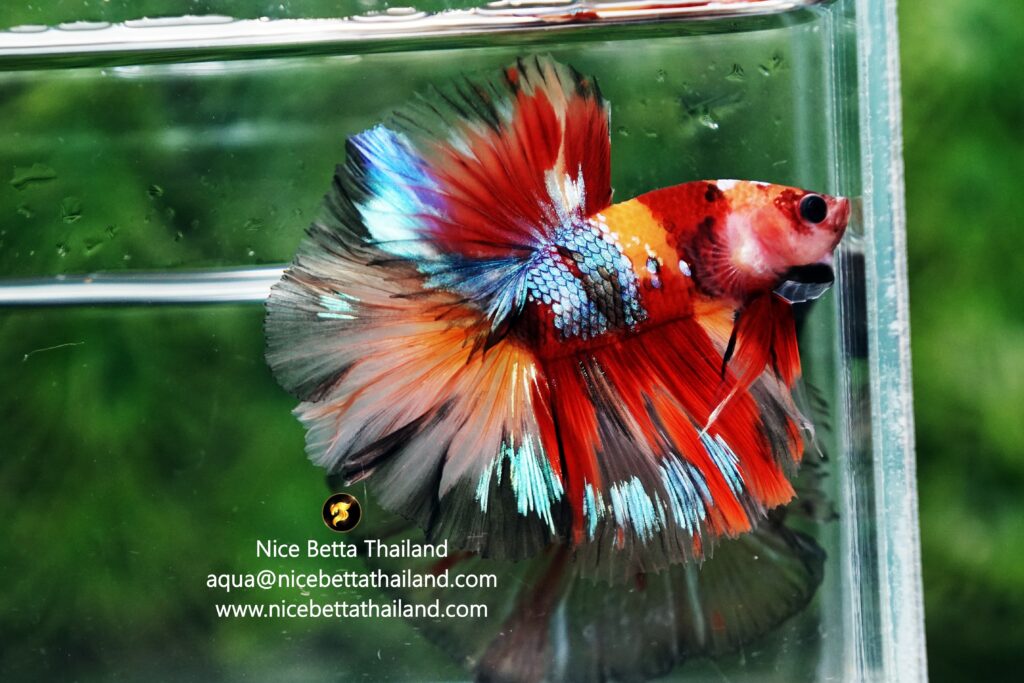One of the most common questions that people ask when it comes to bettas is, “What’s the best betta tank setup?” Alongside food, perhaps the most important factor that affects a betta’s well-being is the quality of its water and its tank or aquarium setup. In this lens, I’m going to discuss the importance of having a good tank setup for your pet betta fish and how you can maintain the health and beauty of your fish by giving the best home he could have.
Size Does Matter
While it’s true that bettas can survive regardless of the tank setup (thanks to their labyrinth organ which allows them to breath oxygen even in small bodies of water), size still matters. Most siamese fighting fish experts agree that in order for bettas to live full, quality lives, they have to be housed in tanks no smaller than 2.5 gallons. And with that, I mean housing ONE male betta per tank. Bettas can live an average of 2 years, but I have heard of several accounts of bettas living up to 5 years because they have been kept in large tanks. To give you an idea on the best betta tank setup you can choose from, feel free to read along.

Types Of Betta Tank Setup (From Best to Worst)
Individual Tank (2.5 to 5 gallons)
I believe, and most betta experts would agree that this is the best tank setup for your betta fish. Filtered or unfiltered, what makes small individual tanks an excellent choice is that they are easier to clean and maintain. If you wish to place a filtering system, make sure you choose a model that has a flow control. Strong currents from power filters can hinder your betta from building bubble nests (which they love to do!).
Corner filters are also good but stay away from undergravel filters as much as possible especially if you are using a tank smaller than 5 gallons. With undergravel filters, you are required to take everything out of your tank (pebbles, plants, accessories, everything!) every time you need to perform a full water change so it is not advisable.
It’s also okay not to put a filter on your tank just like in my case. However, you have to understand that dirt and ammonia can easily build up in smaller tanks especially when they are not filtered. Therefore, if you decide not to put a filter in your small tank, make sure you perform FULL water changes on a regular basis. For 2.5 to 4 gallon tanks, I suggest doing FULL water changes every 3-5 days. For 5 gallon tanks, you can do water changes every 5-7 days, provided that you replace at least 25 percent of the water once within that period to maintain the quality of your water.
Read more : 5 Min guide make good betta fish water
When it comes to adding heaters, I suggest you only add one if you are living in countries that experience cold seasons. Since I live in Asia, I don’t put heaters to any of my tanks because the temperature ranges from 76-82 degrees Fahrenheit all year long. One advice in adding heaters: Don’t add one if your tank is smaller than 5 gallons since most heaters can heat up water in small tanks really fast and may kill your betta.

I consider this setup as second best because most of the breeders I know keep their bettas in tanks this size. This is the perfect setup if you are a breeder and are keeping 200 plus bettas in your home. You definitely don’t have to put a filter for this setup since it’s too small to have one, so that means you have to perform FULL water changes every 2-3 days.
Betta Trivia: What do you think of this betta tank setup?

Divided Tank
Haven’t tried this setup yet but what I’ve heard and read from those who have is that it is not a very good tank setup for your betta. The problem with this setup is that even though two or more male bettas have dividers to separate them, they are sharing the same water. When one of your bettas get sick, there’s a huge chance that the others will get contaminated. So if you’re planning to go for this kind setup, forget it.
Community Tank
This setup is pretty similar to the divided tank, only that it doesn’t use any dividers. The problem with this setup is that your betta is going to share the same thank with other types of tropical fish, and since bettas are aggressive in nature, they can go and attack other fish smaller than themselves. Or if you put them together with other aggressive fish like tiger barbs, the tables can turn and they can fall victim to these fin nipping fish. Finally, just like in divided tanks, your betta is going to share the same water with other fish, which means they have a higher chance of acquiring disease. While this kind of setup may seem to be attractive, I don’t recommend it at all. Female betta fish sorority tanks
Betta Tank Setup Tip:
The larger your betta tank is (2.5 gallons and up), the higher the chance that your betta can live up to five years!

Performing Water Changes For Betta Tanks
Next to food, water quality is the best determining factor of the health and beauty of your betta splendens. Most betta diseases are a result of poor water quality, and could be avoided through regular water changes. Believe it or not, many betta experts agree that the best way to maintain the quality of the fins of long-finned bettas such as halfmoons and crowntails is by performing massive water changes. And by massive, they mean changing the water of your betta’s tank as frequent as every day! This may not apply to you if you are only keeping your betta exclusively as a pet, but if you wish to maintain the beauty of your show type bettas, then there’s no other way around it but to maintain your betta’s water quality through regular water change. So how exactly do you change the water of your betta’s tank?
I have here a table of different tank sizes and how frequent you should change their water:
Tank Size Frequency of Water Change
- Gallon and below ————————————————————–2 to 3 days
- 5 to 5 gallons (unfiltered)—————————————————-5 to 7 days
- Gallons and up (filtered)——————————————————Once a month (25% weekly)
When performing water changes, I suggest taking out everything and changing 100 percent of the water. Unlike other tropical fish, bettas are selectively bred, and their fins are highly sensitive to dirty water. You also don’t have to worry about stressing them when doing 100% percent water changes because the rule that says you have to leave at least 10 or 20% of the water unchanged does not apply to bettas.
Always use aged water for your bettas, and make sure to add water conditioner before putting your betta back inside the tank. Your tap water may contain chlorine and other elements that might be harmful to your betta, so you would want to treat it first with a water dechlorinator. Water dechlorinators are fast-acting and can eliminate chlorine and chloramines from the water within minutes, but still, aging your water or letting it settle for a day or two before using it is still necessary to ensure its quality.

Final Thoughts On Adding Tank Accessories
Tank accessories such as substrate, live/plastic plants, heater, and filtration system are a great addition to any betta tank. However, you have to consider your goal for keeping a betta first before deciding on adding them. Are you keeping bettas for the sake of a hobby? Or, are you breeding them to make some money? If your answer is the former, then I would say it’s okay to add accessories to your betta tank setup especially if you’re only keeping a few bettas (1-5 maybe).
However, if you are breeding bettas for a living, then there’s no point in adding accessories to your tank since you’re going to keep more than 200 hundred bettas once your breeding becomes successful. As I have said, most breeders keep their betta fry in tanks smaller than 1 gallon, and since they’re going to dispose of them anyway, they leave their tanks bare. This a common practice among betta breeders in Thailand and other parts of Asia.

Meanwhile, here are some of the pros and cons of adding accessories to your betta tank setup:
The Pros:
- Accessories make your betta tank attractive.
- Substrate such as pebbles can serve as biological filtration for your betta tank.
- Some accessories can serve as hideout for your betta.
The Cons:
- Accessories can give you a difficult time cleaning your betta tank especially if you are keeping more than five bettas.
- Sharp edges either from plastic/live plants or from other add-ons can cause damage to your betta’s fins.
- Betta tank accessories can be pretty expensive.
- Some live plants are not easy to maintain. When the leaves rot, they can be the cause of disease for your betta.
Furthermore, let me point out to you the only instances when you should add accessories to your betta tank such as filtration system, heater, substrate, plants, and more.
- If you cannot commit to perform regular water changes for your betta tanks. (Your filtration system helps keep your betta tank clean for weeks)
- If you are living in countries that experience cold seasons. (You will definitely need a heater to keep your betta water warm)
- If you are keeping only a few bettas (what I consider few is around 1-5 bettas).
I’m not saying that you cannot add accessories to your betta tanks at all if you are keeping hundreds of bettas. I’m only suggesting that the ideal tank setup for them is the bare tank. Some breeders design a drip system for their bettas for easy water maintenance. In the end, it’s up to you to decide what you think and feel is the best betta tank setup for you and your fish. And hopefully, you are fully aware of the pros and cons of each of the betta tank setup that you can choose from.
Also we have group talk about betta fish for sale and share any new tip take care information on Web3 socialFi group

Right now we have betta fish doctor help every bettas lover by top breeder in Thailand to cure or share more tip on Animalverse social
If your bettas fish sick or need tip to treat help Let’s join the group many top breeder will help to answers betta fish community
More tip :
All of Betta Fish A Guide on Patterns, Color in the world
Best idea for make betta fish tank
All of Betta Fish A Guide on Patterns, Color in the world
The Sad Truth On Betta Fish In Tiny Spaces
15 Common Betta Fish Diseases Prevention and Treatment















